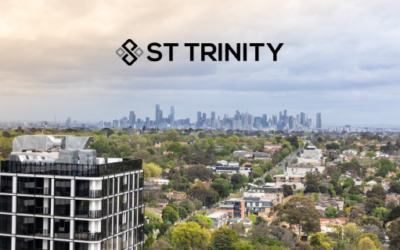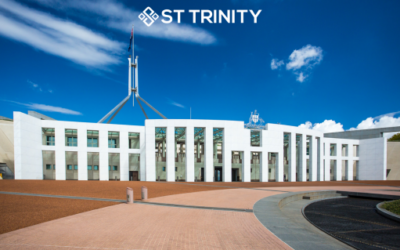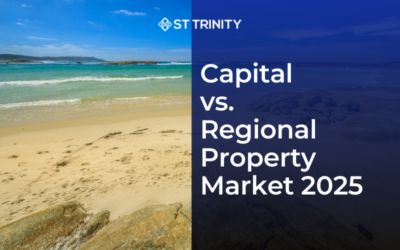A home loan with a fixed rate mortgage repayment is a popular option for Australian homeowners as it provides stability and certainty in uncertain economic times – characterised by rising interest rates, the rising cost of living and many other financial hardship situations.
However, what happens when one’s fixed-rate home loan reaches its maturity date? Will borrowers be left financially distraught as they inevitably transition into variable home loan rates? Or will they be prepared for the transition?
This article explores some mortgage stresses Australian homeowners may face today and what to do moving forward to ensure financial confidence.
Table of Contents
Fixed Rate VS Variable Rate Mortgages
FIXED RATE MORTGAGE:
A fixed-rate home loan is a type of mortgage where the interest rate is set for a predetermined period of time, usually between one and five years, but sometimes longer. During this period, your interest rate and regular repayments will not change, regardless of whether the market interest rates go up or down.
Pros:
- Stable and predictable mortgage repayment because interest rates are fixed
- Great for borrowers who want to plan and budget their finances
- In times of economic uncertainty, they also protect home buyers from potential interest rate hikes, thereby providing financial peace of mind
Cons:
- Typically have higher interest rates compared to variable-rate loans
- Allows only limited additional repayments and may incur fees for making extra repayments or paying off the loan early
- If interest rates were to decrease, those who are fixed on a higher rate, are left to make higher repayments and do not benefit from the decrease.
VARIABLE RATE MORTGAGE:
A variable-rate home loan is a type of mortgage where the interest rates can fluctuate over time based on changes in the market interest rates or at the discretion of the lender. This means that your regular repayments are determined by various factors – economic conditions, the Reserve Bank of Australia’s cash rate, and the lender’s financial projections.
Pros:
- More flexibility: Borrowers can make extra repayments or increase their repayment amounts towards their mortgage (which is common when the interest rates fall), which in turn will help them pay off their loan sooner
- Some variable loan packages will offer additional features like redraw facilities or loan offset sub-accounts – both are handy financial tools to decrease interest repayments
Cons:
- If interest rates rise, borrowers will be making greater repayments which can cause financial stress
Which Option Is For You?
When choosing between a fixed rate and variable rate home loan, it is important to consider your individual circumstances, risk tolerance, and financial goals. It may also be helpful always to seek professional advice from a financial advisor or mortgage broker.
When giving mortgage advice to homeowners, Jason Lin, a Loan Consultant expert at St Trinity Property Group, stresses the importance of taking into account their individual situation.
“We are always focusing on the client, not the market”, he said
“This is why recommending rates requires us to understand a client’s financial position today, risk appetite and the next few years in the foreseeable future. We will need to understand the current cash flow, how old their kids are, how they see their careers in the next few years, are they starting a family, what are their property goals, do they plan to live in this home long term or plan to upgrade eventually etc.”
Jason explained 2 realistic customer situations.
Sarah and George – Variable Rate Home Loan with an offset account

Sarah and George are a young couple in well-paying professions. They have a strong cash flow from their combined incomes, resulting in significant savings. They don’t have children and don’t have plans to start a family soon, as they are aiming to fast track their careers within the next few years.
They are currently looking to purchase their 1st property together, so a variable-rate home loan with an offset account is a good option for them.
This is because Sarah and George not only have the risk appetite to afford interest rate increases but also have the risk appetite to benefit from potential decreases. The additional offset account allows them to have control of their interest payments despite having no control over their interest rate. For instance, they can leverage the amount in their offset account (usually a combination of one’s savings and salary) to offset their home loan amount and thus, decreasing their mortgage repayments.
Adam and Jess – 3 Years Fixed Rate Home Loan

Adam and Jess are a young couple with a 2-year-old child currently in childcare. They live paycheck to paycheck and find it difficult to accumulate savings.
They are currently looking to invest in a property, so then fixed-rate home loan would be the best option.
Unlike the previous example, Adam and Jess do not have the risk appetite to afford interest rate increases. A 3-year time period is desirable as after their child turns 5, they no longer have childcare expenses, thus, increasing their cash flow. Finding a property with a rental guarantee is also very important, so the client is guaranteed a profit or break even for the next 2-3 years. In the months leading up to the end of their fixed rate, they are advised to review their financial position to determine what they should do moving forward.
What To Do When Transitioning Out of a Fixed Rate Home Loan?
At its April 2023 board meeting, the Reserve Bank of Australia (RBA) held the cash rate steady at 3.60%. This pause followed a series of hikes that began in May of 2022 and continued into the new year.
Although the cash rate does not have a direct impact on home loan interest rates, banks and lenders closely monitor it and consider it when determining their own rates. Consequently, if the cash rate is predicted to increase, banks and lenders may raise their interest rates to pass on the added cost to their customers.
According to the banks, over a million households will transition away from their ultra-low fixed-rate mortgages this year and next, some of which were fixed as low as 1.95%, and will need to explore other alternatives that may have significantly higher interest rates
Regarding the present situation, Jason said that homeowners who had fixed rates between 2.59% to 2.99% two to three years ago are not experiencing immediate panic or stress related to repayments.
According to him, our home loan consultants have contacted clients to explore refinancing options, but most of them seem content to observe the market and are not in financial distress, contrary to media reports. A Westpac team manager also confirms that their customers transitioning from fixed home loans share a similar sense of ease.
“However, in the next year (2024), we will start to see clients come off their 4 year fixed rates which were locked in for 1.89% – 2.19%.” Jason says
“This may create some financial concerns as these borrowers enjoyed the luxury of low home loan rates that were fixed for a longer term, meaning that they have adjusted their consumer spending to these favourable rates.”
Also, Jason suspects that many homeowners who leveraged this package are first-home buyers based on first-home buyer statistics back in 2020.
Jason suggests that clients who are transitioning from a low fixed rate to a higher variable rate should consider refinancing, as the standard variable rate may no longer be competitive in today’s market and could become stale.

Final Thoughts
Homeowners who are considering cost-cutting measures should take the following three steps into account:
- Review their home loan and refinance at today’s competitive rates.
- Limit personal liabilities and consolidate debt (such as car loans and credit cards) into the home loan using built-up equity from the fixed loan period to achieve a lower combined interest rate.
- Protect their credit score by contacting the bank to make an arrangement in case they anticipate missing a repayment. This way, their credit rating remains strong, and finance options remain available even after the difficult period has passed.
Still unsure? Want to speak to a professional property consultant and get personalised advice for your concerns?
Speak to our St Trinity Team at (02) 9099 3412 or enquire here.




